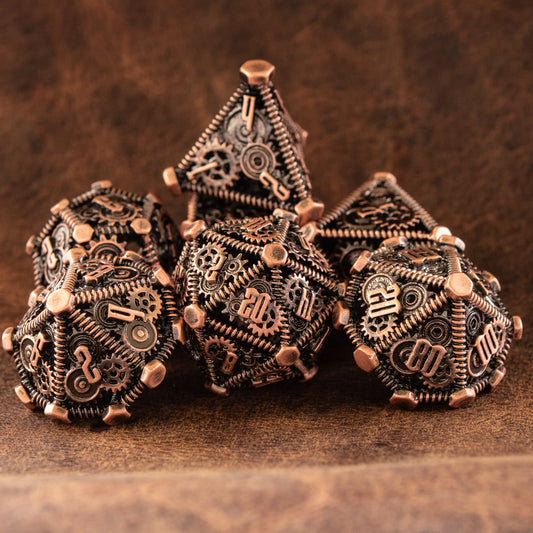When Were Dice Invented Exploring the Ancient Origins and Cultural Significance
Share
When Were Dice Invented? Exploring the Ancient Origins and Cultural Significance
Introduction
Imagine a world where the roll of a small, marked object could decide the fate of a warrior, predict the future, or determine the outcome of a game. Dice, those ubiquitous tools of chance, have played such roles for millennia. But when were dice invented, and how did they evolve to become the gaming essentials we know today? This article delves into the fascinating history of dice, tracing their origins from ancient civilizations to their cultural and social significance over time.
Section 1: Ancient Origins of Dice
Subsection 1.1: Early Beginnings
The earliest dice-like objects date back to around 5000 BCE, crafted from simple materials such as fruit pits, pebbles, and shells. These primitive dice were not merely for gaming; they held significant roles in fortune-telling and religious rituals in ancient civilizations like Mesopotamia, Egypt, and the Indus Valley. The use of these objects in divination highlights the ancient belief in the power of randomness as a means to communicate with the divine or predict the future.
Subsection 1.2: Transition from Knucklebones to Cubic Dice
Dice evolved from the use of animal bones, particularly knucklebones, which were initially used in games and rituals. The transition to cubic dice marked a significant development in their design. The first known cubic dice appeared around 3000 BCE in Mesopotamia and the Indus Valley. These early dice were made from materials such as bone, ivory, and stone, and they featured the now-familiar six-sided design. This shift from irregular knucklebones to standardized cubic forms allowed for more consistent and fair gameplay.
Subsection 1.3: Early Dice Games
Ancient dice games were not only a source of entertainment but also held social and cultural importance. Games like the Royal Game of Ur, Senet, and Liubo were popular in their respective cultures. These games often had complex rules and were used for both leisure and competitive purposes. The design of ancient dice also began to feature the 'opposite sevens' configuration, where the numbers on opposite faces add up to seven. This design is still prevalent in modern dice, reflecting its long-standing significance.
Section 2: Dice in Ancient Cultures
Subsection 2.1: Mesopotamia and Egypt
In Mesopotamia and Egypt, dice were integral to both gaming and divination practices. Archaeological findings, such as the dice discovered in the Royal Game of Ur, provide evidence of their early use. In Egypt, dice were often found in tombs, indicating their role in both life and the afterlife. The cultural significance of dice in these regions is underscored by their use in religious rituals and as tools for decision-making and prophecy.
Subsection 2.2: Ancient Greece and Rome
The Greeks and Romans embraced dice with enthusiasm, incorporating them into various aspects of daily life. In Greece, dice were used in games and gambling, with references found in classical literature and art. The Romans, known for their love of gambling, used dice extensively in games such as Alea. Dice-related artifacts from this period, including intricately designed dice made from materials like bronze and bone, highlight their popularity and the sophistication of their craftsmanship.
Subsection 2.3: China and India
In ancient China and India, dice also played crucial roles in gaming and cultural practices. Chinese dice, often made from bone or ivory, were used in games like Liubo and later influenced the development of dominoes and playing cards. In India, references to dice games can be found in ancient texts such as the Rigveda and the Mahabharata. Unique designs and games, such as Pachisi, which used cowrie shells or stick dice, reflect the rich cultural heritage and the importance of dice in social and religious contexts.
Summary of the Main Points Discussed
- Ancient Origins: Dice-like objects date back to around 5000 BCE, used in civilizations like Mesopotamia, Egypt, and the Indus Valley for games, divination, and rituals.
- Evolution: Dice evolved from knucklebones to cubic shapes around 3000 BCE, with materials like bone, ivory, and stone.
- Cultural Significance: Dice have been used in various cultures for games, gambling, and religious practices, with notable findings in Mesopotamia, Egypt, Greece, Rome, China, and India.
- Modern Developments: The Industrial Revolution and the rise of role-playing games brought about standardized and polyhedral dice. Casino dice and digital dice rollers represent the latest advancements.
- Future Innovations: Emerging trends include precision dice, luxury dice, eco-friendly materials, and the integration of technology like augmented reality and blockchain.
Reflection on the Historical and Cultural Significance of Dice
Dice not only serve as tools for entertainment but also symbolize the human quest to understand and influence the unknown. They have been used in rituals, games, and gambling, reflecting societal values and beliefs about chance and fate. The continued evolution of dice highlights our enduring fascination with randomness and probability.
Call-to-Action
If you found this exploration of dice history fascinating, share this article with fellow enthusiasts or delve deeper into related topics. Discover more about the cultural impact of dice, the mathematics of probability, or the latest innovations in dice design. Your journey into the world of dice is just beginning!
Section 3: Evolution of Dice Through the Ages
Subsection 3.1: Medieval and Renaissance Periods
- Introduction of New Materials: During the medieval and Renaissance periods, dice were crafted from materials like ivory, bone, wood, and precious metals. Skilled artisans created elaborate designs, often for the wealthy.
- Elaborate Designs: Dice became status symbols, with intricate craftsmanship reflecting the owner's social standing. These ornate dice were often used in high-stakes games and as gifts.
- Popular Gambling Games: Games like hazard and shuffle gained popularity, leading to the rise of loaded dice designed to cheat. Dice towers were used to ensure fair rolling.
Subsection 3.2: Modern Dice Evolution
- Impact of the Industrial Revolution: Mass production techniques and new materials like plastic made dice widely available. Injection molding allowed for complex shapes and designs.
- Standardization of Dice Designs: The modern six-sided dice with numbered dots became the norm, ensuring fairness in games. Polyhedral dice for role-playing games (RPGs) introduced new shapes and gameplay mechanics.
- Introduction of Polyhedral Dice: RPGs popularized dice with unique shapes, such as the 20-sided die (d20), providing a wider range of outcomes and adding complexity to games.
Subsection 3.3: Casino Dice and Digital Dice
- Strict Regulations and Quality Control: Casino dice are subject to rigorous standards to prevent cheating. They are designed for perfect balance and randomness, with security measures like unique serial numbers.
- Rise of Digital Dice Rollers: Digital technology has led to the development of online and mobile dice rollers, ensuring randomness with advanced algorithms. Customizable settings enhance the gaming experience.
Section 4: Cultural and Symbolic Significance of Dice
Subsection 4.1: Dice in Art and Media
- Representation in Literature and Art: Dice symbolize chance, fate, and randomness in various works of literature and art. They appear in Shakespeare's plays, Thomas Mann's novels, and the surrealist works of Max Ernst.
- Symbolic Meanings: Dice represent the unpredictability of life, the interplay of chance and fate, and philosophical concepts like destiny and free will.
Subsection 4.2: Religious and Social Perspectives
- Use in Religious Rituals: Dice have been used in rituals to communicate with deities and predict the future. In Hinduism, dice are used in sacred games, while African cultures use them for ancestral communication.
- Social Impact: Dice games foster social interactions and community bonding but also pose risks like gambling addiction and cheating.
Section 5: Future of Dice Gaming
Subsection 5.1: Innovations in Dice Design and Technology
- Emergence of Precision and Luxury Dice: Precision dice undergo rigorous testing for balance and randomness, ideal for professional gaming. Luxury dice crafted from exotic materials cater to collectors.
- Impact of 3D Printing: Advanced 3D printing enables intricate, customized dice designs previously impossible to manufacture.
- Integration of Technology: Augmented reality (AR) apps and blockchain technology offer new ways to roll dice and ensure fairness.
Subsection 5.2: Eco-Friendly and Sustainable Dice
- Sustainable Materials: Manufacturers explore recycled plastics, biodegradable resins, wood, and stone for dice production.
- DIY Dice-Making Movement: Enthusiasts create unique dice from recycled materials or natural elements, reducing environmental impact and adding a personal touch to gaming.
By exploring the rich history and cultural significance of dice, we gain a deeper appreciation for these small yet powerful objects. Whether you're a gaming enthusiast or a history buff, the world of dice offers endless fascination and discovery. Share this article, explore related topics, and continue your journey into the captivating world of dice!


